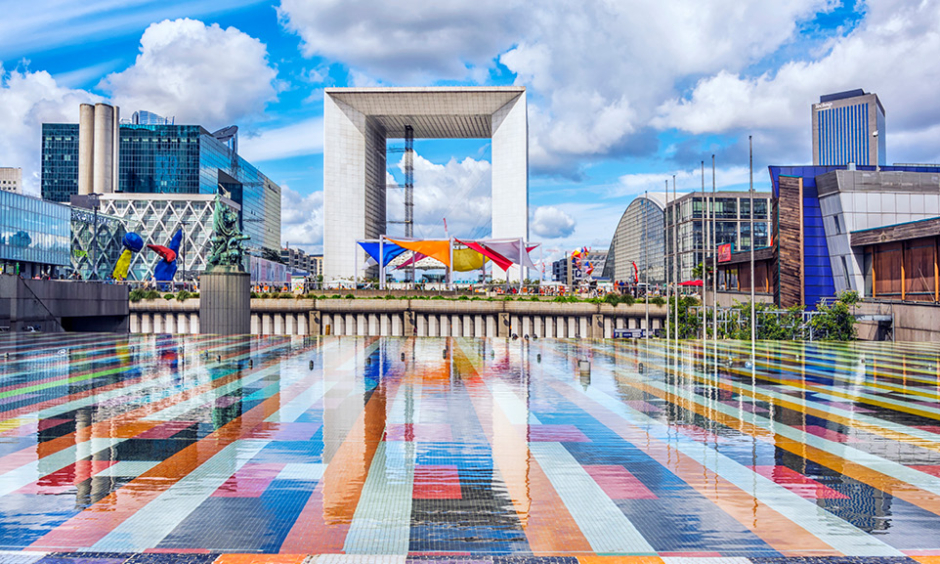Written by James Coker | Reporter, European Medical Journal | @EMJJamesCoker
![]()
The largest meeting of respiratory professionals in the world, the annual congress of the ERS, will this year be taking place in the romantic city of Paris, France, from 15th–19th September 2018. With in excess of 22,000 delegates expected to attend throughout the 5 days, the networking opportunities available will be vast and likely to lead to new research collaborations. There is also a lot of anticipation for this year’s scientific programme, covering all aspects of respiratory health. There are a number of new sessions and features to look forward to this time around as well, including the interactive Game Zone, an initiative that will allow participants to test their knowledge around key areas of respiratory medicine. As always, the EMJ team will be on hand to observe everything that goes on and will also be present at our stand in the exhibition area during the opening hours. We will then use our insights to create a review of the congress, to be published in the next edition of the EMJ Respiratory eJournal in November. Click here to subscribe for free and ensure you don’t miss out on this packed issue!
History of the Congress
The first ever congress of the ERS took place in Brussels, Belgium, in 1991, shortly after the society was created from the merger of the Societas Europaea Physiologiae Clinicae Respoiratoriae (SEPCR) and the European Society of Pneumology (SEP) in 1990.1 There were around 2,500 participants present during that inaugural event, which, when compared to the more than 22,000 attendees the congress now attracts,2 emphasises the growth of the society and its annual meeting over the last 28 years. The congress, which has the record number of registrations for its 2015 event, held in Amsterdam, Netherlands, with 23,292.3 This year is the first time Paris, or indeed the nation of France, has ever hosted the ERS Congress.
Last Time Out
The iconic city of Milan, Italy, was the venue for last year’s ERS Congress, in which there were 22,121 attendees present from 9th–13th September 2017. This marked 17 years since the event took place in Italy; the previous occasion was in the year 2000 in Florence. Plenty of exciting new findings were presented, including how proximity to the nearest park can impact the presence of asthma symptoms in children living in the city; the correlation between respiratory tract infections in early life and the chance of developing asthma and decreased lung function in later life; and several studies analysing the risks associated with e-cigarettes. All of this and more was described in our review of the 2017 ERS Congress, which can be accessed here.
Important Timings
The opening session, always an entertaining affair, will take place between the times of 17.45 and 21.00 on Day 1 on the congress, Saturday 15th September. There are also a number of new innovative features planned this time around. These include the ERS Congress Game Zone, an interactive space with individual game stations, enabling delegates to self-assess their knowledge of eight major areas of respiratory medicine. No pre-booking is required, meaning that participants can turn up as and when their schedule allows. This area will be open on the days of Sunday 16th, Monday 17th, and Tuesday 18th September between the times of 09.00 and 17.00. To acknowledge the crossover that respiratory health often has with other therapeutic areas, a new session type has been created for this year’s event. This is entitled ‘Respiratory medicine meets…’, with the focus on haematology in a session on Monday 17th September from 10.45–12.45, before another on Wednesday 19th September from 08.30–10.30 exploring the links between respiratory medicine and rheumatology.4
Another new feature at ERS 2018 is an interactive session entitled ‘Lungs on Fire’. Taking place on Monday 17th September from 15.00–16.00, this session will pit a panel of experts against the audience to diagnose various clinical cases. The exhibition area, which, as always, will showcase the latest products and devices from the pharmaceutical and medical manufacturing industry, will be open from 09.00–17.00 on 16th, 17th, and 18th September. The EMJ team will be present at our stand during these periods, so please do pop over and chat to our friendly team!
Hot Topics
This year’s congress programme has been separated into eight major fields in respiratory medicine, ensuring there are plenty of topics of interest for respiratory health professionals of all specialities. These will each be covered by a variety of session types, including educational and scientific, symposiums, state-of-the-art, skills workshops, meet-the-expert, and much more. The eight areas are: Respiratory critical care; Pulmonary vascular disease; Airway diseases; Interstitial lung disease (ILD); Respiratory infections; Sleep and breathing disorders; Paediatric respiratory diseases; and Thoracic oncology.
Social Media
As always, the ERS social media channels will be replete will updates and live announcements during the event, so make sure you regularly check their Twitter (@ERSTalk) and Facebook (https://en-gb.facebook.com/EuropeanRespiratorySociety/) pages to stay abreast of everything that is happening.
Likewise, the EMJ team will be constantly tweeting our thoughts and joining in the debate. This can be observed on our main Twitter account (@EMJReviews) and our account focussed on all things respiratory-related (@EMJRespiratory). In addition, follow the individual Twitter accounts of our attending team members for further insights about the event, including the interactions that take place at our stand in the exhibition area. These are: Spencer Gore, Dan Healy, Dan Scott, Stacey Rivers, Kim Cordell, and James Coker.
Feel free to tweet us your thoughts or if you would be interested in arranging a meeting during the course of the congress! Remember to use the hashtag #ERSCongress when putting out your thoughts on social media.
History of the City
The name Paris is derived from the Gauls of the Parisii tribe that settled in the area between 200 and 250 BC. The region was conquered by the Romans under the leadership of Julius Caesar in 52 BC, after which it became a regional centre under the Romans and in the early Middle Ages.5 Following its naming as capital of France in 987 AD,6 Paris’s political, social, economic, architectural, and scientific influence grew over the centuries, gaining a reputation as one of the most important cities in Europe. Paris was also at the heart of one of the most seminal events in world history: the French Revolution, in 1789. Napoleon Bonaparte, who eventually became the ruler of France in the aftermath of this upheaval, instigated the building of two of the city’s most iconic landmarks: the Arc de Triomphe and La Madeleine. Later, the world-famous Eiffel Tower was completed in 1889. Another period of turmoil occurred with the occupation of the city by Germany during World War 2. Nevertheless, Paris has continued to flourish into the modern day and has retained its status as a globally important player on the international stage, currently holding a population of around 2.2 million people.7
Places to Visit
Steeped in history and world-famous landmarks, it will be difficult to fit every attraction in during your visit! Here is a selection of iconic architecture you will not want to miss:
Eiffel Tower: Attracting nearly 7 million visitors a year, this magnificent monument is a must-see for tourists visiting the city.
Notre Dame Cathedral: Completed in the year 1345, this building is an architectural and historical delight, leaving visitors in awe of its wonder and beauty.
Palace of Versailles: As the most famous castle in the whole of France and having been at the centre of numerous political and military events throughout history, the Palace of Versailles, with its huge complex of buildings, gardens, and terraces, is definitely worth a visit.8
Here at the EMJ we cannot wait for the start of this year’s annual ERS Congress, which will illuminate the field of respiratory health with the latest research discoveries and insights from experts of all specialities. We will then present the highlights in our review of the event in the upcoming EMJ Respiratory journal. Please do come along to our stand at any point to find out more about our publication and subscribe to our content for free if you like what you hear!
REFERENCES
- European Respiratory Society. Who We Are. Available at: https://www.ersnet.org/the-society/who-we-are#who-we-are. Last accessed: 23 August 2018.
- Siafakas N. The European Respiratory Society, 1990–2010: a 20-year anniversary story of success. Eur Respir J. 2010;35(1):1-2.
- European Respiratory Society. ERS Statistics. 2018. Available at: https://erscongress.org/images/congress-2018/Industry/ERS_Statistics.pdf. Last accessed: 23 August 2018.
- ERS International Congress 2018. Programme highlights. Available at: https://erscongress.org/programme-2018/highlights.html. Last accessed: 23 August 2018.
- Discover France. History of Paris. Available at: http://www.discoverfrance.net/France/Paris/Paris_history.shtml. Last accessed: 23 August 2018.
- History. This Day in History: 1951 Paris celebrates 2,000th birthday. Available at: https://www.history.com/this-day-in-history/paris-celebrates-2000th-birthday. Last accessed: 23 August 2018.
- Lambert T. A Short History of Paris, France. Available at: http://www.localhistories.org/paris.html. Last accessed: 23 August 2018.
- Come to Paris. What to do in Paris. Available at: https://www.cometoparis.com/paris-guide/what-to-do-in-paris-s938. Last accessed: 23 August 2018.







